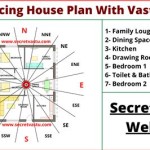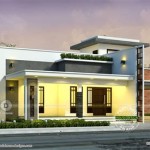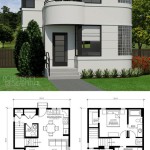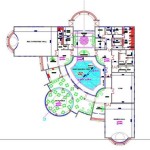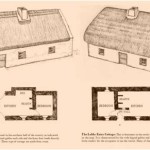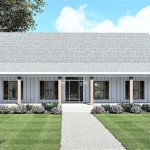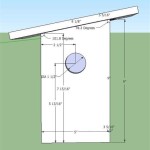Castle House Plans: Exploring Tudor Influences
The allure of castles persists, captivating imaginations with their historical significance, architectural grandeur, and air of romanticism. While constructing a full-fledged medieval castle is often impractical, incorporating castle-like elements into a home design offers a unique and appealing option. Among the various architectural styles that lend themselves to castle-inspired design, the Tudor style stands out as particularly adaptable. This article will explore the key features of Tudor architecture, how they translate into castle house plans, and considerations for those seeking to create a home that evokes the spirit of a bygone era.
Tudor architecture, prevalent in England from the late 15th century to the early 17th century, represents a transition between medieval architecture and the emerging Renaissance styles. It is characterized by a blend of practical design elements dictated by the climate and available materials, with aesthetic preferences reflecting the evolving tastes of the period. When adapting Tudor principles to castle house plans, emphasis should be placed on translating the style's defining characteristics into a cohesive and visually compelling design.
Key Tudor Architectural Elements for Castle-Inspired Homes
Several specific elements define Tudor architecture and are crucial for incorporating the style into castle house plans. These features should be carefully considered during the design process to ensure an authentic and harmonious aesthetic.
Steeply Pitched Roofs and Gables: One of the most recognizable features of Tudor architecture is the steeply pitched roof. This design element was initially functional, facilitating efficient snow and rain runoff, but it also contributes significantly to the visual drama of Tudor buildings. Gables, often adorned with decorative bargeboards, further enhance the roofline's complexity. When incorporating this into castle house plans, consider the overall scale of the roof and how it contributes to the castle-like silhouette. Multiple gables can create the impression of turrets or towers, further solidifying the castle aesthetic. The roof material itself can also contribute to the desired effect; slate or simulated slate shingles offer a classic and durable option.
Half-Timbering and Stucco: Half-timbering, where exposed timber frames are filled with wattle and daub or brick, is another hallmark of the Tudor style. While traditional half-timbering can be costly and require specialized craftsmanship, modern adaptations often utilize faux timbering applied to a stucco or brick façade. The contrast between the dark timber and the lighter stucco creates a visually striking pattern that is undeniably Tudor. In castle house plans, half-timbering can be selectively used to highlight specific areas of the façade, such as gables, entryways, or window surrounds. It is important to maintain a consistent visual language throughout the design to avoid a disjointed appearance. The color and texture of the stucco should complement the timber, creating a harmonious and visually appealing exterior.
Tall, Narrow Windows with Mullions and Transoms: Tudor windows are typically tall and narrow, often divided into smaller panes by mullions (vertical dividers) and transoms (horizontal dividers). This window design contributes to the overall vertical emphasis of the Tudor style. Casement windows, which swing outwards, are also common. In castle house plans, the windows play a critical role in achieving the desired aesthetic. Consider using leaded glass or stained glass accents to enhance the historical feel. The placement and proportion of the windows should be carefully considered to maintain visual balance and harmonize with the other architectural elements. Avoid overly large or modern-looking windows, as they can detract from the overall Tudor aesthetic.
Prominent Chimneys: Tall and ornate chimneys are a characteristic feature of Tudor houses. These chimneys were not only functional for venting fireplaces but also served as architectural statements. In castle house plans, the chimneys can be strategically placed to mimic the appearance of towers or turrets. Multiple chimneys can further enhance the castle-like effect. Brick or stone are common materials for Tudor chimneys, and decorative detailing, such as corbelling or patterned brickwork, can add visual interest. The size and scale of the chimneys should be proportional to the overall size of the house to maintain a balanced appearance.
Arched Doorways and Porticos: While not universally present, arched doorways and porticos can add a touch of grandeur to a Tudor-inspired castle house plan. A rounded or Tudor arch provides a welcoming and elegant entry point. A portico, a covered porch supported by columns, can further enhance the entry's prominence. The style and materials used for the doorway and portico should be consistent with the overall Tudor aesthetic. Stone or brick are common materials, and decorative details, such as carved keystones or ornamental ironwork, can add visual interest. The scale of the doorway and portico should be proportional to the size of the house to maintain a balanced appearance.
Interior Design Considerations for Tudor Castle Homes
While the exterior of a Tudor-inspired castle house defines its initial impression, the interior design should complement the architectural style and enhance the overall castle-like ambiance. Several key considerations are crucial for achieving a cohesive and historically inspired interior.
Wood Paneling and Beams: Wood paneling is a classic feature of Tudor interiors, adding warmth, texture, and a sense of historical authenticity. Wainscoting, paneling that covers the lower portion of the walls, is particularly common. Exposed wood beams on the ceilings further enhance the rustic and traditional feel. In castle house plans, consider incorporating wood paneling in key areas such as the great room, dining room, and library. The type of wood, its stain, and the style of the paneling should be carefully selected to complement the overall design. Darker woods, such as oak or walnut, are often preferred for their traditional appearance. Exposed wood beams can be either structural or decorative, adding visual interest and reinforcing the castle-like atmosphere.
Fireplaces: A large, impressive fireplace is a central feature of many Tudor homes. In castle house plans, the fireplace can serve as a focal point in the great room or other gathering spaces. Stone or brick are common materials for Tudor fireplaces, and decorative details, such as carved mantels or ornate firebacks, can add visual interest. The size and scale of the fireplace should be proportional to the size of the room to maintain a balanced appearance. Consider incorporating a fire screen or andirons that complement the overall Tudor aesthetic. A functional fireplace can also provide supplemental heat and create a cozy and inviting atmosphere.
Hardwood Floors and Stone Accents: Hardwood floors are a traditional and durable flooring option that complements the Tudor style. Wide planks and darker stains are often preferred for their rustic and historical appearance. Stone accents, such as stone flooring or stone walls, can further enhance the castle-like ambiance. In castle house plans, consider using hardwood floors in the main living areas and stone accents in areas such as the entryway or the kitchen. The type of stone and the style of the flooring should be carefully selected to complement the overall design. Avoiding overly polished or modern flooring materials can help maintain the historical authenticity of the interior.
Rich Colors and Textures: Tudor interiors are often characterized by rich colors and textures. Deep reds, greens, and blues are common, along with warm earth tones. Upholstered furniture with textured fabrics, such as velvet or brocade, can add a luxurious and inviting feel. In castle house plans, consider incorporating these rich colors and textures in the paint, wallpaper, and furnishings. Avoid overly bright or modern colors, as they can detract from the overall Tudor aesthetic. Layering different textures can add visual interest and create a sense of depth. Carefully selected artwork and accessories can further enhance the historical authenticity of the interior.
Practical Considerations for Tudor Castle House Plans
Beyond the aesthetic considerations, several practical aspects should be addressed when designing a Tudor-inspired castle house. These considerations include cost, maintenance, and energy efficiency.
Cost: Building a Tudor-inspired castle house can be more expensive than building a more conventional home. The complex rooflines, intricate detailing, and specialized craftsmanship associated with the Tudor style can significantly increase construction costs. Sourcing authentic materials, such as slate roofing or hand-hewn timbers, can also add to the overall expense. It is essential to develop a detailed budget and carefully prioritize design elements to manage costs effectively. Consider using modern materials that mimic the appearance of traditional materials to reduce expenses without sacrificing the overall aesthetic.
Maintenance: Tudor houses, particularly those with traditional materials, can require more maintenance than modern homes. Exposed timber frames may need periodic sealing or repair, and slate roofing can be prone to damage from extreme weather. Regular inspections and preventative maintenance are crucial for preserving the integrity of the structure and preventing costly repairs. Select durable and low-maintenance materials whenever possible to minimize long-term upkeep. Consider hiring a contractor with experience in Tudor architecture to ensure that the house is properly maintained.
Energy Efficiency: Tudor houses are not inherently energy efficient, particularly those with single-pane windows and older construction techniques. Modern building techniques and materials can be used to improve the energy efficiency of a Tudor-inspired castle house without compromising its aesthetic appeal. Install energy-efficient windows and insulation to reduce heat loss and improve thermal comfort. Consider using geothermal heating and cooling systems or solar panels to further reduce energy consumption. Proper ventilation is also crucial for preventing moisture buildup and maintaining a healthy indoor environment. Integrating energy-efficient features into the design can significantly reduce energy costs and minimize the environmental impact of the home.
Designing a Tudor-inspired castle house plan requires careful consideration of both aesthetic and practical factors. By understanding the key features of Tudor architecture and integrating them thoughtfully into the design, it is possible to create a home that evokes the grandeur and romance of a bygone era while meeting the needs of modern living.

Chapter Iv The Plan Of Early Tudor House Castle Floor Plans

Life In Elizabethan England Maps Ingatestone Hall Lodge House Tudor How To Plan

Scottish Castle House Plan With Tower 5 Bedrms 116 1010

Tudor Style Victorian Castle Detailed House Plans

Pin By Believe On Floor Plans For Mansions And Estate Homes Vintage House Victorian Blueprints

Tudor Style Victorian Castle Detailed House Plans

Tudor Style Victorian Castle Detailed House Plans Historic American Homes

Tudor Style Victorian Castle Detailed House Plans Historic American Homes

Tudor Style House Plan 5 Beds 6 Baths 7632 Sq Ft 141 281 Mansion Floor Castle Plans

Mini Medieval Gothic Stone Castle With Tower 2 Bedrooms Printed Hous Historic American Homes

